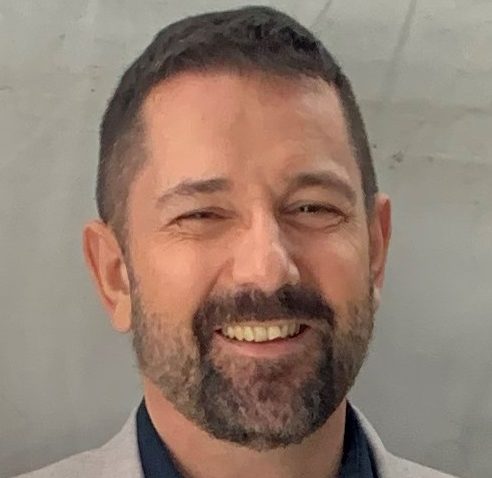 Fulbright Research Scholar at New York University in 2024. Bankia Award. Full Professor at the Institute of Telecommunications and Multimedia Applications from the Universitat Politècnica de València. PhD in Applied Mathematics Cum Laude at UPV. M.Sc. in Telecommunication Engineering at the UPV, First class Honors, Regional Government Award with a Spanish National Award in Telecommunication Engineering. Full Professor at the UPV School of Telecommunication Engineering. He is one of the founding members of the HiPerSC Group and has directed 18 research projects, among them the projects “Optimized Computation of Matrix Functions and Applications to Artificial Intelligence” funded by the Generalitat Valenciana Grant CIAICO/2023/275 (2024-2027) with IP2 Prof. Nuria Lloret, and “Matrix Functions: computation and applications” TIN2014-59294-P (2015-2017) funded by the Spanish Ministerio de Economía y Competitividad and the European Regional Development Fund (ERDF) codirected with Prof. Emilio Defez. He is author of more than 90 Publications in international journals and conferences. In 2013 he received a scholarship from the Spanish Ministry of Education and Science for researching at the Department of Computer Science from Carnegie Mellon University (Pittsburgh, USA), one of the first in international rankings, and in 2014 he taught at that university. He has been a Fulbright Research Scholar at New York University in 2024 and has received another scholarship to be a visiting scholar at the New York University in 2020. He has been invited as a visiting scholar at the at UC Berkeley, Dublin City University (#59 Times Young University rankings), KTH Royal Institute of Technology in Stockholm (#89 QS World University Rankings) and Monterrey Institute of Technology and Higher Education. His research interests include the computation of matrix functions, matrix polynomials and their applications.
Fulbright Research Scholar at New York University in 2024. Bankia Award. Full Professor at the Institute of Telecommunications and Multimedia Applications from the Universitat Politècnica de València. PhD in Applied Mathematics Cum Laude at UPV. M.Sc. in Telecommunication Engineering at the UPV, First class Honors, Regional Government Award with a Spanish National Award in Telecommunication Engineering. Full Professor at the UPV School of Telecommunication Engineering. He is one of the founding members of the HiPerSC Group and has directed 18 research projects, among them the projects “Optimized Computation of Matrix Functions and Applications to Artificial Intelligence” funded by the Generalitat Valenciana Grant CIAICO/2023/275 (2024-2027) with IP2 Prof. Nuria Lloret, and “Matrix Functions: computation and applications” TIN2014-59294-P (2015-2017) funded by the Spanish Ministerio de Economía y Competitividad and the European Regional Development Fund (ERDF) codirected with Prof. Emilio Defez. He is author of more than 90 Publications in international journals and conferences. In 2013 he received a scholarship from the Spanish Ministry of Education and Science for researching at the Department of Computer Science from Carnegie Mellon University (Pittsburgh, USA), one of the first in international rankings, and in 2014 he taught at that university. He has been a Fulbright Research Scholar at New York University in 2024 and has received another scholarship to be a visiting scholar at the New York University in 2020. He has been invited as a visiting scholar at the at UC Berkeley, Dublin City University (#59 Times Young University rankings), KTH Royal Institute of Technology in Stockholm (#89 QS World University Rankings) and Monterrey Institute of Technology and Higher Education. His research interests include the computation of matrix functions, matrix polynomials and their applications.
His main achievements in computation and Applied Mathematics include:
1) Discovering a new family of methods for evaluating matrix polynomials more efficiently than the state-of-the-art Paterson–Stockmeyer method. For many years, the Paterson–Stockmeyer method has been considered the most efficient general method for the evaluation of matrix polynomials. In the article “Efficient evaluation of matrix polynomials” Sastre shows that this statement is no longer true. Moreover, for many years rational approximations have been considered more efficient than polynomial approximations. In the previous paper it is shown that in fact polynomial approximations provide a higher order of approximation than the state-of-the-art computational methods for rational approximations for the same cost in terms of matrix products.
2) Discovering a new kind of approximation in the article “Efficient mixed rational and polynomial approximation of matrix functions“, which defines a new way to calculate nondiagonal rational matrix approximations as aggregations based on a matrix polynomial plus a matrix rational function, being more efficient than diagonal rational matrix approximations. Some examples are given for the computation of the matrix exponential and the matrix cosine.
3) Showing, contrary to what is believed, that computing matrix functions by using matrix polynomial approximations (Taylor and Hermite) may be better than using Padé approximations in both accuracy and cost.
4) Obtaining the first theorem, as far as we know, of development of matrix functions in non-hermitian matrix polynomials series (Laguerre matrix polynomial series): that was the subject of my PhD Thesis.
Jorge Sastre is also a member of the Computer Music Project from Roger B. Dannenberg. He studied computer music and music composition and has composed pieces for orchestra, ensemble and soloists. Many of them have been composed using Sastre’s library for atonal aleatoric music composition that he has written for the book “Algorithmic Composition” from M. Simoni and R.B. Dannenberg during his research visits to Carnegie Mellon University and another of his research interests is the Music Technology, see Soundcool project.
Jorge Sastre at ResearchGate, LinkedIn, Google Scholar (Publications)
